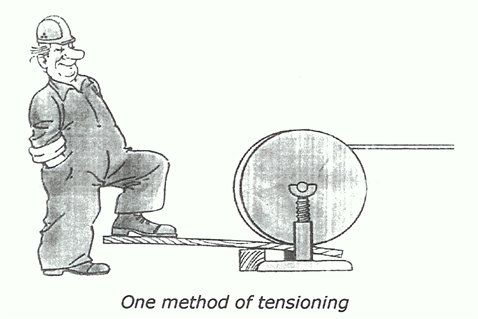The following “Did you know?: Roping a Crane” article is a lightly edited reprint of an old Cranes101 blog post from 2015. We hope you find it informative.
The initial installation of the rope to your equipment is most important. High performance wire ropes can be damaged from induced twist through incorrect installation. An extreme circumstance may mean discarding the rope.
The rope, when installed to your equipment, must be reeled correctly.
OVER WOUND DRUM: If installing onto the top of your machinery drum, the rope must be reeled from the top of the reel under a constant maintained tension.
UNDER WOUND DRUM: If installing onto the bottom of your drum, the rope must be reeled from the bottom of the reel with a constant maintained tension.
The rope should not be allowed to uncoil with loose wraps on the reel.
An easy way to remember the correct installation method is:
TOP TO TOP BOTTOM TO BOTTOM
To not maintain a constant tension during installation can induce twist into the rope and your reeving system. Or worse, the rope could become kinked, possibly rendering the product unsuitable for service.

Applying drum tension to your crane’s rope
Remember – do not install the rope directly to the rope drum without tension being applied.
For tensioning, we recommend 1 to 1-1/2% of the minimum breaking load (mbl) of the rope.
35 ton mbl x 1-1/2% = approximately 1/2 ton tension required.
80 ton mbl x 1-1/2% = 1.2 ton approximate tension required.

Mind Your Fleet Angle
Fleet Angle: To install with greater than a 1-1/2º (degree) fleet angle can induce excessive twist or rotation into the rope. Please be aware of the importance of correct alignment of the reel to the sheave or drum for installation purposes. High performance rotation resistant ropes can be susceptible to problems from twists induced at installation.
Twist
The twist of a rope at 1º fleet angle and at 5º. Twist becomes induced due to the rope not entering the sheave [etc] at the lowest point, (that point being the sheave groove), first touching the flange then rolling into the bottom of the groove.
The rolling action caused by excessive fleet angle twists the rope. This negative effect is further accentuated when multi-part reeving systems are used.
We’ll be posting more informative “Did you know?” series articles like this one on roping a crane.
If there are any topics you’d like to read more about, email us at info@cranes101.com.
Some of our classes, like the nationally accredited crane certification classes, cover this topic more extensively.
Please refer to our Courses page for more information.
